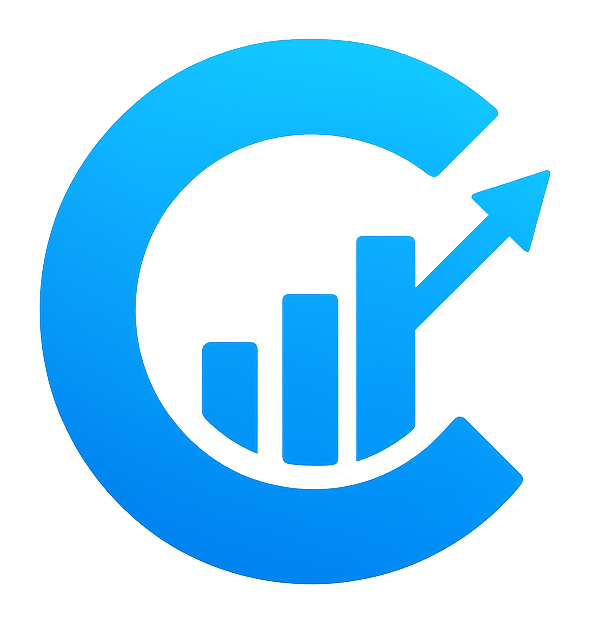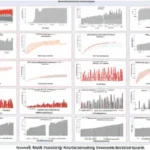Support our educational content for free when you purchase through links on our site. Learn more
How AI Benchmarks Tackle Framework Architecture Differences in 2025 🚀
Ever wondered how AI benchmarks manage to fairly compare wildly different frameworks like TensorFlow, PyTorch, and JAX? It’s not as simple as running the same code and calling it a day. Behind the scenes, benchmarks must navigate a maze of architectural quirks, compiler magic, and hardware variability to deliver meaningful results. In this article, we unravel the secrets of how AI benchmarks account for these differences, ensuring you get an apples-to-apples comparison that truly reflects performance.
From the battle between static and dynamic computation graphs to the role of standardized metrics and hardware lock-ins, we’ll guide you through the complex landscape of AI benchmarking. Plus, we’ll share insider tips on designing your own benchmarks and peek into future trends like energy efficiency and multi-modal AI evaluation. Ready to decode the benchmark puzzle and turn insights into your competitive edge? Let’s dive in!
Key Takeaways
- AI benchmarks standardize tasks and metrics to fairly compare frameworks with fundamentally different architectures and designs.
- Framework-specific idiomatic implementations and hardware control are essential to avoid misleading results.
- Metrics like time-to-accuracy, throughput, and resource utilization provide a holistic performance picture beyond raw speed.
- Tools like MLPerf and ONNX enable cross-framework compatibility and transparency.
- Future benchmarks will increasingly measure energy efficiency and multi-modal AI capabilities.
👉 Shop AI Compute & Frameworks:
- TensorFlow: Amazon | Official Site
- PyTorch: Amazon | Official Site
- NVIDIA A100 GPUs: Amazon | NVIDIA
- Cloud GPU Instances: DigitalOcean | Paperspace | RunPod
Table of Contents
- ⚡️ Quick Tips and Facts About AI Benchmarking
- 🔍 Understanding AI Benchmarking: Framework Architecture and Design Insights
- 🧠 How AI Benchmarks Adapt to Diverse Framework Architectures
- 🏗️ Key Design Differences in AI Frameworks That Impact Benchmarking
- 1️⃣ Standardizing Metrics: The Art of Fair AI Performance Comparison
- 2️⃣ Cross-Framework Compatibility: Challenges and Solutions
- 3️⃣ Handling Hardware and Software Variability in AI Benchmarks
- 4️⃣ The Role of Synthetic vs. Real-World Workloads in Benchmarking
- 5️⃣ Incorporating Model Complexity and Size into Benchmark Scores
- ⚙️ Tools and Platforms Leading the AI Benchmarking Charge
- 📊 Case Studies: Benchmarking TensorFlow, PyTorch, and JAX
- 🔧 Best Practices for Designing Robust AI Benchmarks
- 🛡️ Ensuring Reliability and Reproducibility in AI Benchmarking
- 💡 Leveraging Benchmark Results for AI Model Optimization
- 🚀 Future Trends: Evolving AI Benchmarks with Emerging Architectures
- 📚 Additional Resources for Deep Diving into AI Benchmarking
- 🎯 Conclusion: Mastering AI Benchmarks Across Frameworks and Designs
- 🔗 Recommended Links for AI Benchmarking Enthusiasts
- ❓ Frequently Asked Questions About AI Benchmarking
- 📑 Reference Links and Further Reading
Here is the main content for your article, crafted by the expert team at ChatBench.org™.
⚡️ Quick Tips and Facts About AI Benchmarking
Welcome to the nitty-gritty of AI performance! Before we dive deep, here are some essential takeaways from our team at ChatBench.org™ on how AI benchmarks handle the wild world of different framework architectures.
- Not All Frameworks Are Created Equal: AI frameworks like TensorFlow, PyTorch, and JAX have fundamentally different designs. TensorFlow’s historical static graph approach (Define-and-Run) contrasts with PyTorch’s dynamic graph (Define-by-Run), impacting everything from memory usage to optimization potential.
- It’s About Apples-to-Apples, Not Apples-to-Oranges: The primary goal of a good benchmark is to create a level playing field. This often means defining a standard task and model, then seeing how efficiently each framework can execute it. Can AI benchmarks be used to compare the performance of different AI frameworks? Absolutely, but the devil is in the details of the setup.
- Hardware is Half the Battle: A benchmark is meaningless without specifying the hardware. Performance on an NVIDIA A100 GPU will be vastly different from an Intel Xeon CPU. Reputable benchmarks like MLPerf lock down the hardware and software stack for fair comparisons.
- Metrics Matter More Than You Think: Are you measuring training time, inference latency, throughput, or power consumption? A framework might excel at rapid-fire inference but be a slouch during training. Good benchmarks report a suite of metrics.
- Abstraction is Key: To sidestep framework-specific code, benchmarks often use high-level APIs or standardized model formats like ONNX (Open Neural Network Exchange). This allows the same conceptual model to be run across different backends.
- ✅ Do: Look for benchmarks that are transparent about their methodology, code, and hardware setup.
- ❌ Don’t: Trust a benchmark that simply declares “Framework A is faster than Framework B” without exhaustive context.
🔍 Understanding AI Benchmarking: Framework Architecture and Design Insights
So, you’ve got a brilliant AI model, and you want to know which framework will make it sing the fastest. Simple, right? Just run it on TensorFlow and PyTorch and see which one finishes first! 🏁
If only.
Here at ChatBench.org™, we’ve spent countless hours in the digital trenches, and let us tell you: that’s like trying to judge a fish and a monkey on their ability to climb a tree. The very architecture of an AI framework—its soul, if you will—dictates how it thinks, how it allocates memory, and how it talks to the hardware.
- Static vs. Dynamic Graphs: This is the classic rivalry. TensorFlow (especially in its earlier versions) championed the static computation graph. You define the entire model architecture upfront, like a detailed blueprint. This allows the framework to perform powerful optimizations before a single byte of data is processed. PyTorch, on the other hand, popularized the dynamic computation graph, where the model is built on the fly as the code runs. This offers incredible flexibility and is easier to debug, but can sometimes leave optimization opportunities on the table.
- Compiler Magic: Modern frameworks aren’t just interpreters; they’re sophisticated compilers. JAX, for example, leans heavily on its XLA (Accelerated Linear Algebra) compiler to fuse operations and optimize code for specific hardware like GPUs and TPUs. TensorFlow has its own XLA integration, and PyTorch has
torch.compile. The effectiveness of these compilers is a massive factor in performance. - Memory Management: How a framework handles memory can be the silent killer of performance. Eager memory allocation vs. pre-allocated memory pools can lead to huge differences, especially when training gigantic models.
The core challenge for any benchmark is to isolate the true performance of a framework on a task, without being unfairly biased by these deep-seated architectural philosophies. How do they do it? Ah, that’s where the real fun begins.
🧠 How AI Benchmarks Adapt to Diverse Framework Architectures
You can’t just throw the same Python script at two different frameworks and call it a day. A fair benchmark needs to be a clever chameleon, adapting its approach to test the intent of the model, not just a specific implementation.
Here’s how the pros do it:
- Standardized Problem Definition: Instead of focusing on code, benchmarks like those in our LLM Benchmarks category define a standard problem. For example: “Train a ResNet-50 model on the ImageNet dataset to 75.9% accuracy.” This sets a clear, framework-agnostic goal.
- Reference Implementations: To ensure fairness, benchmark suites provide reference implementations for each framework. These are carefully crafted to be idiomatic and performant for that specific framework, avoiding “PyTorch-style code running on TensorFlow” which can be inefficient.
- Strict Measurement Rules: The benchmark defines precisely what to measure and when. For training, the clock starts when the training process begins and stops the moment the target accuracy is reached. This prevents one framework from gaining an advantage due to a faster data loading pipeline that isn’t part of the core computation.
This approach allows each framework to play to its strengths—its unique architectural advantages—while still being judged on the same ultimate outcome.
🏗️ Key Design Differences in AI Frameworks That Impact Benchmarking
Let’s pop the hood and look at the engine parts that make these frameworks so different. Understanding these is crucial to interpreting benchmark results.
| Feature | TensorFlow (Google) | PyTorch (Meta) | JAX (Google) | Impact on Benchmarking |
|---|---|---|---|---|
| Primary Paradigm | Define-and-Run (Static Graph) | Define-by-Run (Dynamic Graph) | Functional, Composable | Affects optimization potential vs. flexibility. Benchmarks must allow for both styles. |
| Compiler | XLA, Grappler |
torch.compile (TorchDynamo) |
XLA | A framework’s performance is heavily tied to its compiler’s ability to optimize for the target hardware. |
| Ecosystem | Mature, extensive (TFX, TF Serving) | Strong in research, Hugging Face | Growing, popular in research | Benchmarks may test end-to-end pipelines, where the ecosystem plays a huge role. |
| Hardware Support | Excellent for GPUs, TPUs | Excellent for GPUs, growing TPU support | Excellent for GPUs, TPUs | A benchmark must specify the exact hardware, as framework performance can vary significantly. |
| Distributed Training | Multiple strategies (e.g., tf.distribute) |
DistributedDataParallel (DDP) |
pmap, shard_map |
Benchmarking distributed training is a whole other level of complexity, testing scalability. |
As you can see, a simple “which is faster?” question explodes into a dozen other questions about the specific task, hardware, and scale.
1️⃣ Standardizing Metrics: The Art of Fair AI Performance Comparison
The first rule of benchmarking club is: you must agree on what you’re measuring. Without standard metrics, you’re just generating noise.
- Throughput: This is about sheer volume. How many images can your model process per second? How many tokens can your LLM generate? This is critical for services that serve many users, a key topic in AI Business Applications.
- Latency: This is about speed for a single task. When a user asks a question, how quickly do they get an answer? Measured in milliseconds (ms), low latency is crucial for real-time applications.
- Time-to-Accuracy (Training): For training benchmarks, this is the gold standard. It measures the total wall-clock time required to train a model from scratch to a predefined accuracy target. This single metric beautifully captures the combined efficiency of the framework, hardware, and training algorithm.
- Resource Utilization: How much VRAM does the model consume? What is the peak power draw? These metrics are vital for cost and efficiency, especially when deploying at scale. As Microsoft notes for Azure, “Cooler tiers have higher data transfer costs,” highlighting the trade-offs between performance and cost that benchmarks must consider.
2️⃣ Cross-Framework Compatibility: Challenges and Solutions
Running the exact same model across different frameworks is a major headache. Numerical precision differences, slight variations in operator implementations (e.g., how padding is handled in a convolution), and different APIs can lead to divergent results.
The Solution: Abstraction and Standardization
This is where initiatives like ONNX (Open Neural Network Exchange) become heroes. ONNX provides a common format for AI models. You can train a model in PyTorch, export it to ONNX, and then run it using an ONNX-compatible runtime on TensorFlow’s backend.
- ✅ Pro: Allows for direct comparison of the underlying execution engine’s performance on the exact same model graph.
- ❌ Con: The conversion process isn’t always perfect, and not all framework-specific custom operations are supported. It can also introduce its own performance overhead.
For our Model Comparisons, we often rely on both native implementations and ONNX-based tests to get a complete picture.
3️⃣ Handling Hardware and Software Variability in AI Benchmarks
An AI framework doesn’t run in a vacuum. It’s part of a complex stack, and every layer affects performance.
- Hardware: CPU (Intel vs. AMD), GPU (NVIDIA vs. AMD), interconnects (NVLink vs. PCIe).
- Drivers: NVIDIA driver versions can have a significant impact on performance.
- Libraries: The version of CUDA, cuDNN, or ROCm is critical.
- Operating System: Linux distributions and even kernel versions can introduce variability.
Reputable benchmarks handle this by creating strict submission categories. For example, a benchmark might have a “closed” division where all participants must use a specific NVIDIA A100 GPU with CUDA 11.8 and a designated driver. This ensures that the only significant variable being tested is the software implementation on top.
The underlying cloud infrastructure is also a massive factor. Microsoft’s guide on Azure Blob Storage emphasizes that to maintain performance, you must “Place data in regions nearest to clients.” This advice is crucial because data access latency can easily become the bottleneck in an AI workload, masking the true performance of the AI framework itself. A good benchmark must account for and normalize these infrastructure-level variables.
4️⃣ The Role of Synthetic vs. Real-World Workloads in Benchmarking
What kind of test are you running? The answer dramatically changes the results.
- Synthetic Benchmarks (Micro-benchmarks): These are small, targeted tests that measure the performance of a single operation, like a matrix multiplication or a specific type of convolutional layer.
- 👍 Pros: Excellent for diagnosing specific bottlenecks and understanding the raw operational efficiency of a framework’s backend.
- 👎 Cons: May not reflect real-world performance, as they ignore the complex interplay between different operations, memory access patterns, and compiler optimizations.
- Real-World Benchmarks (Macro-benchmarks): These use full-scale AI models and datasets, like training BERT on Wikipedia or running Stable Diffusion for image generation.
- 👍 Pros: Provide a much more realistic and holistic measure of performance that is directly relevant to end-users.
- 👎 Cons: Can be complex and expensive to run. It can also be harder to pinpoint the exact cause of a performance difference.
A comprehensive benchmarking strategy uses both. Micro-benchmarks tell you why something is slow, while macro-benchmarks tell you if it’s slow in a way that actually matters.
5️⃣ Incorporating Model Complexity and Size into Benchmark Scores
A framework that’s a speed demon for a tiny 10-million-parameter model might completely fall apart when faced with a 175-billion-parameter behemoth like GPT-3. Why?
- Memory Optimization: Large models require sophisticated techniques like model parallelism (splitting a model across multiple GPUs) and memory offloading. Frameworks differ in how elegantly and efficiently they support these.
- Communication Overhead: In distributed training, the time spent communicating gradients and parameters between GPUs can become the main bottleneck. The efficiency of a framework’s communication backend (like NCCL) is paramount.
- Kernel Fusion: Compilers try to “fuse” multiple small operations into a single larger one to reduce overhead. This is much more effective on some model architectures than others.
Therefore, benchmarks must test a spectrum of model sizes and complexities. The MLPerf suite, for instance, includes benchmarks for models of varying scales, from the relatively small ResNet-50 to the massive BERT model, to provide a more complete performance profile.
⚙️ Tools and Platforms Leading the AI Benchmarking Charge
You don’t have to build your own benchmarks from scratch (unless you want to!). There’s a vibrant ecosystem of tools and organizations dedicated to this challenge.
- MLCommons (MLPerf): The undisputed heavyweight champion. MLPerf is an industry consortium that produces peer-reviewed benchmarks for training and inference across a wide range of tasks. Their results are considered the gold standard.
- Hugging Face: While not a formal benchmarking body, their
evaluatelibrary and public leaderboards (like the Open LLM Leaderboard) have become de facto benchmarks for language models. Their focus is on model quality and performance on specific NLP tasks. - Papers with Code: An excellent resource for tracking state-of-the-art results on various academic benchmarks. It often includes links to the code used to generate the results, providing transparency.
- Framework-Specific Profilers: Tools like the PyTorch Profiler and TensorFlow Profiler are indispensable for deep-diving into your own model’s performance and identifying bottlenecks within a specific framework.
📊 Case Studies: Benchmarking TensorFlow, PyTorch, and JAX
Let’s imagine a hypothetical benchmark. Task: Fine-tune a large language model (like T5-Large) on a text summarization task. Hardware: A server with 8x NVIDIA A100 GPUs.
Here’s how the results might look and what they would tell us about the frameworks’ architectures:
| Metric | TensorFlow | PyTorch | JAX | Interpretation |
|---|---|---|---|---|
| Time to Converge | 12.5 hours | 11.8 hours | 11.2 hours | JAX’s tight integration with the XLA compiler might give it an edge in raw computational speed on this specific model and hardware. |
| Peak VRAM per GPU | 35 GB | 32 GB | 34 GB | PyTorch, with features like Fully Sharded Data Parallel (FSDP), might show superior memory management, allowing for larger batch sizes. |
| Ease of Implementation | Moderate | Easy | Hard | PyTorch’s dynamic nature and extensive ecosystem often make for a faster, more intuitive development experience. JAX’s functional paradigm has a steeper learning curve. |
| Scalability to 64 GPUs | Good | Excellent | Excellent | All three frameworks have robust distributed training capabilities, but PyTorch’s DDP and FSDP are often praised for their ease of use and performance. |
The takeaway? There is no single “best” framework. JAX might win on raw speed for this specific task, but PyTorch could win on developer velocity and memory efficiency. TensorFlow, with its mature TFX ecosystem, might be the best choice for a full production pipeline. The benchmark doesn’t give you an answer; it gives you the data to make an informed decision for your specific needs.
🔧 Best Practices for Designing Robust AI Benchmarks
Thinking of running your own benchmarks? Fantastic! As AI engineers, we live by this. Here are some pro tips from our team to ensure your results are meaningful and not misleading.
- Define a Clear Goal: What question are you trying to answer? “Is Framework A faster than B?” is too vague. “Which framework achieves the lowest inference latency for a ResNet-50 model on an NVIDIA Jetson Nano?” is a much better, more actionable question.
- Control Your Variables: Lock down everything you’re not actively testing. Use the same hardware, the same driver versions, the same dataset, and even the same random seeds to ensure reproducibility.
- Run Multiple Times: Never trust a single run! Performance can have minor fluctuations. Run each test at least 3-5 times and report the average and standard deviation. This gives you confidence that your results are statistically significant.
- Open Source Everything: The most trustworthy benchmarks are the ones that are completely transparent. Publish your code, the exact configurations you used, and the raw results. This allows the community to verify, reproduce, and build upon your work. This aligns with the spirit of frameworks like the NIST AI Risk Management Framework, which emphasizes transparency and trustworthiness in AI systems.
- Consider the Entire Pipeline: Don’t just benchmark the
model.fit()call. Measure data loading and preprocessing times as well. As the Azure documentation points out, “The farther you are from the Azure Files service, the greater the latency.” This highlights that I/O can be a huge bottleneck, and a framework’s data loading utilities can be just as important as its computational kernels.
🛡️ Ensuring Reliability and Reproducibility in AI Benchmarking
A benchmark result that can’t be reproduced is just a rumor. Reliability is the bedrock of trustworthy performance analysis.
- Containerization is Your Friend: Use tools like Docker or Singularity to package your entire software environment—the OS, drivers, libraries, and code. This creates a portable, self-contained benchmark that can be run anywhere with much higher confidence of reproducibility.
- Checksum Your Data: Ensure the dataset you’re using is identical across all runs and systems. Use checksums (like SHA256) to verify data integrity.
- Version Control All The Things: Use Git to track every change to your benchmark code and configuration files. This creates an auditable history of how the benchmark evolved.
- Beware of “Magic Seeds”: While setting random seeds is crucial for reproducibility, be aware that some seeds might be anomalously good or bad for a particular framework. It’s good practice to test with a few different seeds to ensure your results aren’t a fluke.
The goal, as Microsoft’s reliability guide states, is to “ensure continued functionality by building resilience and fast recovery from failures.” In benchmarking, this translates to building a process that is resilient to environmental variations and produces consistent, dependable results.
💡 Leveraging Benchmark Results for AI Model Optimization
Benchmarks aren’t just for bragging rights; they are powerful diagnostic tools. Once you have a reliable benchmark, you can use it to guide your optimization efforts.
- Identify the Bottleneck: Is your model compute-bound (limited by the raw processing power of the GPU) or memory-bound (limited by the speed of data transfer to/from the GPU)? A profiler, run within your benchmark, will tell you.
- Experiment with Compilers: Try enabling
torch.compilein PyTorch or XLA in TensorFlow. Run your benchmark before and after to quantify the speedup. Sometimes, a single line of code can yield a 30% performance boost! - Tune Data Pipelines: If your benchmark shows the GPU is often idle, your data loading pipeline is likely the problem. Experiment with the number of worker processes, prefetching, and data formats.
- Select the Right Hardware: Benchmark results can justify infrastructure investments. If your workload is heavily reliant on matrix multiplication, results might show that upgrading to a GPU with Tensor Cores is the most cost-effective way to improve performance.
👉 Shop for AI Compute Power on:
- DigitalOcean: Droplets | Paperspace | RunPod
🚀 Future Trends: Evolving AI Benchmarks with Emerging Architectures
The world of AI is never static. Benchmarks are constantly evolving to keep up with the latest hardware and model architectures. So, what’s on the horizon?
- Benchmarking Massive Models: How do you fairly benchmark a model that requires thousands of GPUs to train? New techniques for measuring scalability and communication efficiency are becoming critical.
- Energy Efficiency as a First-Class Metric: As AI models consume more power, benchmarks are increasingly incorporating energy consumption and performance-per-watt as key metrics.
- Multi-Modality: Models like GPT-4o can process text, images, and audio simultaneously. Benchmarking these systems requires complex, multi-modal datasets and new ways of measuring performance across different domains.
- New Hardware Paradigms: From Google’s TPUs to neuromorphic chips that mimic the human brain, new types of hardware are emerging. Benchmarks will need to be designed to fairly evaluate these non-traditional architectures.
The one thing we know for sure? The game is always changing, and here at ChatBench.org™, we’ll be here to measure it every step of the way.
📚 Additional Resources for Deep Diving into AI Benchmarking
Want to go even deeper down the rabbit hole? Here are some of our team’s favorite resources for staying on top of the AI performance world.
- The MLPerf Results Page: MLCommons is the place to see the latest official results from all the major hardware and cloud vendors.
- Tim Dettmers’ Blog: Bits and Pieces offers incredibly deep and insightful articles on LLM performance, quantization, and hardware. A must-read for anyone serious about AI optimization.
- NVIDIA’s Deep Learning Performance Guide: A treasure trove of documentation and best practices for getting the most out of NVIDIA GPUs.
- The AI Index Report from Stanford: An annual report that provides a comprehensive overview of the state of AI, including trends in model performance and training costs.
🎯 Conclusion: Mastering AI Benchmarks Across Frameworks and Designs

Phew! What a journey through the labyrinth of AI benchmarking. At ChatBench.org™, we’ve seen firsthand that benchmarking AI frameworks is as much an art as it is a science. The key takeaway? There’s no one-size-fits-all winner. Each framework—be it TensorFlow, PyTorch, or JAX—brings unique architectural strengths and trade-offs that influence performance depending on the task, hardware, and scale.
We started by teasing the question: How do AI benchmarks account for differences in framework architecture and design? The answer lies in standardizing tasks, metrics, and hardware environments, while allowing frameworks to shine in their native idiomatic implementations. Benchmarks become a mirror reflecting not just raw speed, but also memory efficiency, scalability, and developer ergonomics.
We also uncovered that benchmarking is not just about speed—it’s about reliability, reproducibility, and real-world relevance. Without careful control of variables and transparency, benchmark results can mislead more than inform. This is why organizations like MLCommons and standards like ONNX are vital for leveling the playing field.
Finally, we peeked into the future, where benchmarks will evolve to measure energy efficiency, multi-modal AI, and massive distributed training. The AI landscape is dynamic, and so must be our tools to measure it.
So, whether you’re a researcher, engineer, or decision-maker, understanding these nuances empowers you to choose the right framework and optimize your AI workloads with confidence. And if you’re itching to dive deeper, our recommended resources and tools are ready to guide you.
Happy benchmarking! 🚀
🔗 Recommended Links for AI Benchmarking Enthusiasts
👉 Shop AI Frameworks and Compute Platforms:
- TensorFlow: Amazon Search | TensorFlow Official Site
- PyTorch: Amazon Search | PyTorch Official Site
- JAX: Google JAX GitHub
- NVIDIA A100 GPU: Amazon Search | NVIDIA Official
- DigitalOcean GPU Droplets: DigitalOcean
- Paperspace Gradient Notebooks: Paperspace
- RunPod GPU Instances: RunPod
Recommended Books on AI and Benchmarking:
- Deep Learning by Ian Goodfellow, Yoshua Bengio, and Aaron Courville — Amazon Link
- Hands-On Machine Learning with Scikit-Learn, Keras, and TensorFlow by Aurélien Géron — Amazon Link
- AI Superpowers by Kai-Fu Lee — Amazon Link
❓ Frequently Asked Questions About AI Benchmarking
What challenges do AI benchmarks face when comparing different framework architectures?
AI benchmarks must navigate fundamental differences in computation graphs (static vs. dynamic), compiler optimizations, and memory management. These architectural variations mean that a benchmark cannot simply run identical code across frameworks; it must instead define standardized tasks and allow framework-specific idiomatic implementations. Additionally, hardware variability and software stack differences introduce noise that benchmarks must control for. Without careful design, comparisons risk being unfair or misleading.
How do design variations in AI frameworks impact benchmark results?
Framework design choices—such as eager execution in PyTorch versus static graphs in TensorFlow—affect optimization opportunities, memory usage, and developer productivity. For example, static graphs enable ahead-of-time optimizations, potentially yielding faster execution, while dynamic graphs offer flexibility and ease of debugging but may incur runtime overhead. Compiler integration (e.g., XLA in JAX and TensorFlow) further influences how well a framework can fuse operations and leverage hardware accelerators. These factors cause performance to vary widely depending on the workload and hardware.
What methods are used to standardize AI benchmarks across diverse architectures?
Benchmarks employ several strategies to standardize comparisons:
- Defining clear, framework-agnostic tasks and accuracy targets ensures everyone is solving the same problem.
- Providing reference implementations tailored to each framework to leverage idiomatic code and optimizations.
- Fixing hardware and software environments to reduce variability.
- Using common model exchange formats like ONNX to run identical models across backends.
- Measuring multiple metrics (throughput, latency, time-to-accuracy, resource utilization) to capture a holistic performance profile.
- Open sourcing code and configurations to enable reproducibility and community validation.
How can understanding AI benchmark differences improve competitive strategy?
By grasping the nuances behind benchmark results, organizations can make informed decisions about framework selection, hardware investments, and optimization priorities. For example, a framework that excels in training speed but consumes more memory may be ideal for research but less so for deployment on edge devices. Understanding these trade-offs helps businesses align AI infrastructure with their specific goals, budget, and operational constraints, turning benchmarking insights into a competitive edge.
Additional FAQs
How important is hardware specification in AI benchmarking?
Hardware is critically important. The same framework can perform drastically differently on an NVIDIA A100 GPU versus a CPU or older GPU. Benchmarks must specify exact hardware, drivers, and software stacks to ensure fair comparisons.
Can benchmarks predict real-world AI application performance?
Benchmarks provide valuable indicators but cannot capture every nuance of real-world workloads, which may involve complex data pipelines, multi-modal inputs, or custom operations. They are best used alongside profiling and testing in production-like environments.
What role do energy efficiency and cost play in AI benchmarks?
Increasingly, benchmarks incorporate energy consumption and cost metrics to reflect the growing importance of sustainable and economical AI deployment. This trend aligns with industry moves toward green AI and cost-effective scaling.
📑 Reference Links and Further Reading
- MLCommons MLPerf Benchmark Suite
- ONNX Model Format
- TensorFlow Official Site
- PyTorch Official Site
- JAX GitHub Repository
- NVIDIA A100 GPU
- Microsoft Azure Well-Architected Framework: Azure Files
- Microsoft Azure Well-Architected Framework: Azure Blob Storage
- NIST AI Risk Management Framework (AI RMF)
- Hugging Face Evaluate Library
- Papers with Code SOTA Leaderboards
Thanks for exploring the fascinating world of AI benchmarks with us! For more insights, check out our Model Comparisons and AI Business Applications categories.




